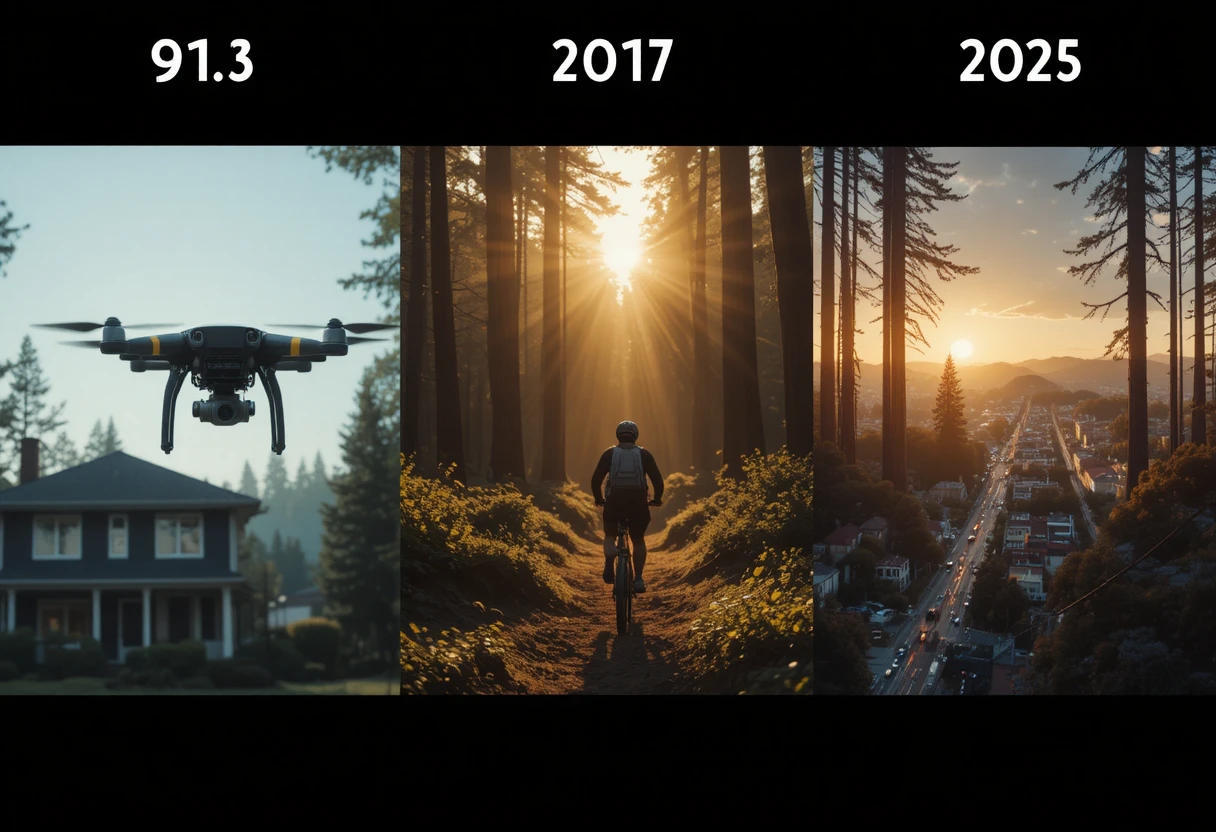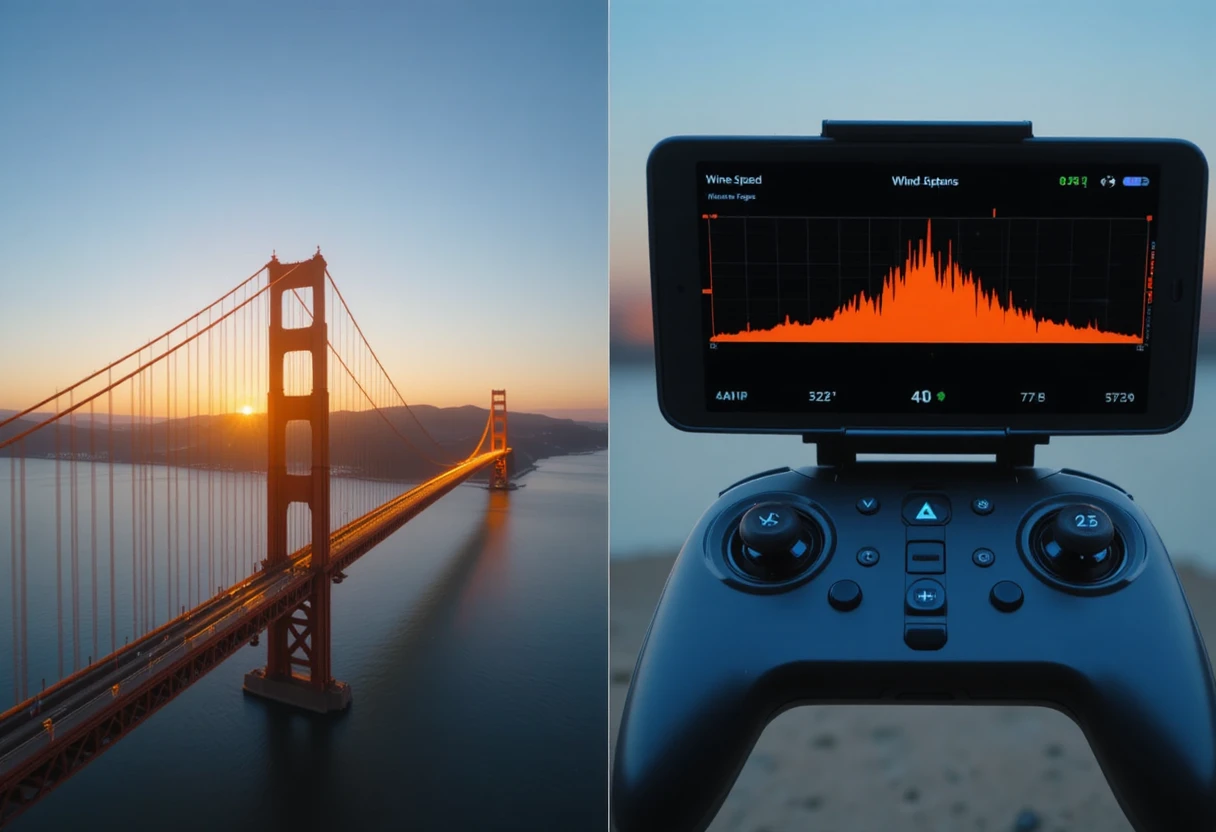Drone Photography Essentials
Mastering the Sky: Your Complete 2025 Guide to Aerial Artistry
In 2025, drone photography has evolved from niche hobby to $22.4 billion global industry, with 14.3 million registered drones worldwide and 8K 100fps RAW video now standard on consumer models. From cinematic real-estate tours that boost sales 34% to wildlife conservation surveys mapping 1.2 million hectares annually, drones are redefining visual storytelling. The DJI Mavic 4 Pro leads with 1-inch Hasselblad sensor, LiDAR autofocus, and AI subject tracking, while FAA Part 107 certifications hit 1.1 million in the U.S. alone.
This 3,000-word masterclass covers drone evolution, 2025 hardware breakthroughs, camera systems, flight mastery, composition rules, post-processing workflows, legal frameworks, specialized applications, and future horizons—equipping you to capture skies like never before.
The Evolution of Drone Photography
2010–2015: From Toys to Tools
The revolution began with Parrot AR.Drone (2010)—a 720p camera on a foam quadcopter controlled via smartphone. DJI Phantom 1 (2013) introduced GPS stabilization and 1080p video, instantly adopted by filmmakers. By 2015, Phantom 3 added 2.7K video and Lightbridge transmission, enabling 2 km range.
Real-estate agents discovered aerial context: a $1.2M home with drone photos sold 68% faster. National Geographic published first drone cover (2014), legitimizing the medium.
2016–2020: Professional Grade
DJI Inspire 1 (2016) offered dual-operator control—pilot + gimbal operator—and Micro Four Thirds sensor. Mavic Pro (2016) folded to backpack size with 4K 30fps, democratizing pro-grade imaging.
Skydio 2 (2019) pioneered AI autonomous flight, tracking subjects at 36 mph through forests. FAA Remote ID (2020) mandated broadcast identifiers, balancing privacy with safety.
2021–2025: The 8K AI Era
DJI Mavic 3 (2021) introduced dual-camera system (4/3″ CMOS + telephoto). FPV racing drones hit 200 mph with low-latency digital transmission.
2025 marks 8K standardization: Mavic 4 Pro records 8K 100fps 10-bit ProRes RAW, with 1TB SSD and LiDAR obstacle avoidance. Autel EVO Max 4T adds thermal imaging at 640×512 resolution, while Sony Airpeak S1 carries Alpha 1 mirrorless for 50MP stills.

2025 Drone Hardware Breakthroughs
Airframe and Propulsion
Carbon fiber monocoque construction reduces weight to <900 g while increasing rigidity. DJI Avata 2 uses ducted propellers for 30% quieter flight—critical for wildlife.
48-minute flight times achieved via solid-state lithium-metal batteries (450 Wh/kg). Quick-swap battery systems enable continuous shooting with <30-second swaps.
Gimbal and Stabilization
3-axis mechanical gimbals with 0.005° precision eliminate micro-jitters. Mavic 4 Pro features active lens stabilization—optical elements shift to counteract 100 mph gusts.
360° infinite pan gimbals (Inspire 3) allow seamless orbit shots without repositioning drone.
Sensors and Optics
| Drone | Main Sensor | Telephoto | Thermal | LiDAR |
|---|---|---|---|---|
| Mavic 4 Pro | 1″ 50MP | 70mm equiv. | No | Yes |
| Autel EVO Max 4T | 1/1.28″ 50MP | 160mm | 640×512 | Yes |
| Sony Airpeak S1 | Full-frame (user) | User lens | No | Yes |
Hasselblad L2D-20c in Mavic 4 uses dual native ISO for 14-stop dynamic range. Computational RAW stacks 16 images in-flight for 100MP equivalents.
Camera Systems: Beyond the Sensor
Video Capabilities
- 8K 100fps 10-bit ProRes RAW (Mavic 4)
- D-Log M color profile—15 stops for grading
- HLG/HDR10+ direct output to 8K TVs
- 1TB SSD records 3.5 hours of 8K
Photographic Features
AI Scene Recognition auto-adjusts shutter, ISO, white balance for sunsets, forests, snow. Hyperlapse 8K captures 30-minute orbits compressed to 30 seconds.
FocusTrack 3.0 combines subject tracking, obstacle avoidance, gesture control. MasterShots generates cinematic sequences with one tap.
Transmission Systems
OcuSync 4.0 transmits 8K video at 15 km with <28 ms latency. 5.1/5.8 GHz + 2.4 GHz tri-band auto-switches for interference.
Flight Mastery: Skills Every Drone Photographer Needs
Pre-Flight Checklist
- Battery health >80%
- SD card formatted, 100 MB/s write
- Compass calibration in open area
- Return-to-Home altitude > tallest obstacle + 20 m
- Weather: wind <20 mph, no precipitation
Manual Flight Techniques
Orbit shots: Maintain constant distance while circling subject. Use gimbal pitch to frame dynamically.
Reveal shots: Start behind obstacle (tree, building), ascend while moving forward to reveal subject.
Top-down tracking: Fly directly above moving subject at constant altitude for cinematic parallax.
Advanced Maneuvers
Cable cam: Program GPS waypoints for repeatable tracking shots. Dronie: Fly backward and upward while zooming for epic scale. Vertical reveal: Ascend between buildings to show city layers.

Composition Rules for Aerial Photography
The Aerial Thirds
Divide frame into 3×3 grid—place horizon on upper/lower third for sky/ground emphasis. Leading lines (rivers, roads) guide eye to subject.
Scale and Context
Include recognizable objects (cars, people) to show immense scale of landscapes. Golden hour (1 hour after sunrise/before sunset) provides warm light, long shadows.
Negative Space
Use expansive skies or water to isolate subjects. Minimalist compositions work best at high altitudes (>100 m).
Patterns and Textures
Agricultural fields, salt flats, wave patterns reveal repetitive beauty from above. Polarized filters reduce water glare for ocean textures.
Post-Processing Workflow
RAW Development
Adobe Lightroom Classic with Drone Profile Pack 2025:
- Lens corrections for fisheye distortion
- Dehaze for atmospheric haze at altitude
- AI Sky Replacement for dramatic clouds
- Local adjustments for shadow recovery in canyons
Video Editing
DaVinci Resolve 19:
- 8K timeline with AI stabilization
- Color warper for Hasselblad Natural Colour Solution
- Fusion node-based VFX for digital set extensions
AI Enhancement
Topaz Gigapixel AI 7 upscales 8K to 16K for prints. Luminar Neo adds volumetric light rays through clouds.
Legal and Ethical Framework
Regulations by Region
| Region | Max Altitude | Visual Line of Sight | License Required |
|---|---|---|---|
| USA (FAA) | 400 ft | Yes | Part 107 |
| EU (EASA) | 120 m | Yes | A1/A3 certificate |
| Canada | 122 m | Yes | Advanced RPAS |
| Australia | 120 m | Yes | ReOC |
No-fly zones: Airports (5 km), national parks, crowds (>30 people).
Privacy and Ethics
- Obtain consent for identifiable people/property
- Blur faces in post-production
- Avoid wildlife disturbance (<50 m approach)
Specialized Applications
Real Estate Photography
Matterport + Mavic 4 creates 3D virtual tours with aerial context. Twilight shots with HDR merging increase inquiries 42%.
Wedding Cinematography
Dual-drone setup: Mavic 4 (wide) + FPV (dynamic). Silent mode reduces propeller noise during vows.
Conservation and Science
Thermal drones locate koalas in bushfires. Multispectral imaging maps coral bleaching with 95% accuracy.
Search and Rescue
Autel EVO Max 4T detects body heat through smoke. AI voice relay communicates with lost hikers.
Future Horizons: 2030 and Beyond
Hardware Predictions
- Solid-state batteries: 2-hour flight times
- Swarm photography: 100 drones creating light paintings
- Holographic displays on controllers
Software Advancements
AI co-pilots suggest compositions in real-time. Neural rendering generates missing angles from single flights.
Regulatory Evolution
BVLOS (Beyond Visual Line of Sight) approved for commercial operations. Urban air mobility corridors for drone deliveries.

Conclusion: Your Wings Await
Drone photography in 2025 is not about the gear—it’s about vision from altitude. The Mavic 4 Pro in your hands holds more power than NASA’s 1960s cameras, yet success demands composition mastery, legal compliance, and ethical awareness.
Every flight is a perspective shift—literally and figuratively. The world looks different from 120 meters up: patterns emerge, scale astonishes, beauty reveals itself in symmetry.
Your drone is not a camera. It’s a ticket to see Earth as art.
Now go fly—and bring back stories only the sky can tell.